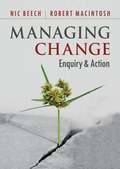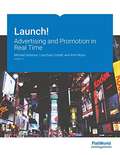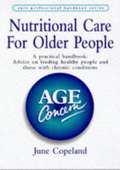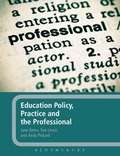- Table View
- List View
The Cambridge Companion to Human Rights Law (PDF)
by Costas Douzinas Conor GeartyWritten in a lively and critical format, this book delves into human rights law in a way that is understandable whilst also penetrating. With contributions by world-class academics, this Companion looks at the contemporary operation of human rights law and provides succinct coverage of the whole subject.
Human Rights in International Relations (3rd edition) (PDF)
by David P ForsytheThis third edition of Forsythe's successful textbook provides an authoritative overview of the place of human rights in contemporary international politics. With completely revised chapters, new case studies and using new sources, it provides a fresh analysis of terrorism, pro-democracy protests, wars and the full range of human rights issues. Human rights standards are examined at the global, regional and national levels, with separate chapters on transnational corporations and advocacy groups. The third edition has been completely updated to include the latest developments on terrorism and counter-terrorism, pro-democracy protests in the Middle East, disputed elections in developing countries, criminal courts and truth commissions, and applications of the laws of war. New sections have been added on subjects such as women's rights and new case studies have been added in each chapter which show how specific rights fare in contemporary political contexts. Containing chapter-by-chapter guides to further reading and discussion questions, this book will be of interest to all students of human rights and their teachers.
Guantanamo and Beyond: Exceptional Courts and Military Commissions in Comparative Perspective (PDF)
by Oren Gross Fionnuala Ni AolainThis book brings together the viewpoints of leading scholars and policy makers on the topic of exceptional courts and military commissions with a series of unique contributions setting out the current 'state of the field'. The book assesses the relationship between such courts and overlapping legal arenas including constitutional law, international law, international human rights law and international humanitarian law. The Military Commissions scheme established by President George W. Bush in November 2001 has garnered considerable controversy. In parallel with the detention facilities at Guantanamo Bay, Cuba, the creation of military courts has focused significant global attention on the use of such courts to process and try persons suspected of committing terrorist acts or offenses during armed conflict.
Managing Change: Enquiry and Action (PDF)
by Nic Beech Robert MacintoshThe ability to manage change successfully is an essential part of business today. This book helps you to understand three key activities for managing change: diagnosing, explaining and enacting. Both practical and action-oriented, it gives students and managers the tools they need to deal with the messy reality of change. The ability to manage change successfully is an essential part of business. It is a skill that is much valued by employers, and it is therefore one of the most commonly delivered courses. This book helps you to understand three key activities for managing change: diagnosing, explaining and enacting. Both practical and action-oriented, it gives students and managers the tools they need to deal with the messy reality of change. It combines theory and diagnostic tools with practical examples that focus on actions and outcomes. It also includes short vignettes and longer cases, from a range of international contexts, for classroom study or for use on distance learning courses. Managing Change is written for advanced undergraduates and graduate students taking modules on change management, strategy and organizations. Its class-tested approach has been successfully delivered in a wide variety of settings, including over fifty executive short courses with FTSE-listed businesses.
Personal Finance
by Rachel Siegel Carol YachtPersonal Finance by Rachel Siegel and Carol Yacht is a comprehensive Personal Finance text which includes a wide range of pedagogical aids to keep students engaged and instructors on track. If you would like to hear Rachel talk about her book, and the Personal Finance course listen here to her podcast. This book is arranged by learning objectives. The headings, summaries, reviews, and problems all link together via the learning objectives. This helps instructors to teach what they want, and to assign the problems that correspond to the learning objectives covered in class. Personal Finance includes personal finance planning problems with links to solutions, and personal application exercises, with links to their associated worksheet(s) or spreadsheet(s). In addition, the text boasts a large number of links to videos, podcasts, experts' tips or blogs, and magazine articles to illustrate the practical applications for concepts covered in the text. Finally, the modular nature of the chapters lends itself to the Flat World Knowledge publishing model allowing instructors to adapt the textbook to the exact needs of their specific class and student body.
Principles of Marketing 2.0
by Mary Anne Raymond Jeff TannerPrinciples of Marketing Version 2.0 by Tanner, Raymond and Schuster teaches the experience and process of actually doing marketing - not just the vocabulary. It carries five dominant themes throughout in order to expose students to marketing in today's environment: Service dominant logic - This textbook employs the term "offering" instead of the more traditional First "P" -- product. That is because consumers don't sacrifice value when alternating between a product and a service. They are evaluating the entire experience, whether they interact with a product, a service, or a combination. So the fundamental focus is providing value throughout the value chain, whether that value chain encompasses a product, service, or both. Sustainability; Increasingly, companies are interested in the impact they are having on their local community as well as the overall environment. This is often referred to as the triple bottom line of financial, social, and environment performance. Ethics and social responsibility; Following on the sustainability notion is the broader importance of ethics and social responsibility in creating successful organizations. The authors make consistent references to ethical situations throughout chapter coverage, and end of chapter material in most chapters will encompass ethical situations. Global coverage -- Tanner, Raymond and Schuster deliberately entitled Chapter 1; What is Marketing?; Whether it is today's price of gasoline, the current U.S. presidential race, or Midwestern U.S. farming, almost every industry and company needs strong global awareness. And today's marketing professionals must understand the world in which they and their companies operate. Metrics -- Firms today have the potential to gather more information than ever before about their current and potential customers. That information gathering can be costly, but it can also be very revealing. With the potential to capture so much more detail about micro transactions, firms should now be more able to answer ;well, what this marketing strategy really worth it?; And what is the marketing ROI?; And finally, what is this customer or set of customers worth to us over their lifetime? Principles of Marketing Version 2.0 brings new and updated coverage of new developments in the influence of social media to empower consumers, as well as marketing's use of social media, such as sentiment analysis, mobile marketing, and customer service and complaint tracking, as a communications and promotion channel, just a name a few. Version 2.0 also has an overall increased number of examples, as well as, new discussion questions in every chapter (resulting in at least 10 per chapter). In addition, the textbook's key terms, and repeated concepts have been strategically arranged to make customizing this book with Flat World's MIYO platform even easier.
Information Systems: A Manager's Guide to Harnessing Technology - Version 1.1
by John GallaugherInformation Systems: A Manager's Guide to Harnessing Technology is intended for use in undergraduate and/or graduate courses in Management Information Systems and Information Technology. One of BusinessWeek's "Professors of the Year", John Gallaugher of Boston College, brings you a brand new Management Information Systems textbook that teaches students how he or she will experience IS from a Managers perspective first hand through interesting coverage and bleeding-edge cases. Get involved with John's community by visiting and subscribing to his blog, The Week In Geek, where courseware, technology and strategy intersect and joining his Ning IT Community site where you can get more resources to teach Information Systems. Shockingly, at a time when technology regularly appears on the cover of every major business publication, students find IS among the least appealing of management disciplines. The teaching approach in Information Systems: A Manager's Guide to Harnessing Technology can change this. The text offers a proven approach that has garnered student praise, increased IS enrollment, and engaged students to think deeper and more practically about the space where business and technology meet. Every topic is related to specific business examples, so students gain an immediate appreciation of its importance. Rather than lead with technical topics, the book starts with strategic thinking, focusing on big-picture issues that have confounded experts but will engage students. And while chapters introduce concepts, cases on approachable, exciting firms across industries further challenge students to apply what they've learned, asking questions like: Why was NetFlix able to repel Blockbuster and WalMart? How did Harrah's Casino's become twice as profitable as comparably-sized Caesar's, enabling the former to acquire the latter? How does Spain's fashion giant Zara, a firm that shuns the sort of offshore manufacturing used by every other popular clothing chain, offer cheap fashions that fly off the shelves, all while achieving growth rates and profit margins that put Gap to shame? What's an IPO and can a technology alternative push out investment bankers and insiders to the benefit of entrepreneurs and small investors? Why is Google more profitable than Disney? Is Facebook really worth $15 billion? The Information Systems course and discipline have never seemed more relevant, more interesting, and more exciting. Gallaugher's textbook can help teachers make students understand why.
Risk Management for Enterprises and Individuals
by Etti Baranoff Patrick Lee Brockett Yehuda KahaneThis book is intended for the Risk Management and Insurance course where Risk Management is emphasized. When we think of large risks, we often think in terms of natural hazards such as hurricanes, earthquakes or tornados. Perhaps man-made disasters come to mind such as the terrorist attacks in the U.S. on September 11, 2001. Typically we have overlooked financial crises, such as the credit crisis of 2008. However, these types of man-made disasters have the potential to devastate the global marketplace. Losses in multiple trillions of dollars and in much human suffering and insecurity are already being totaled, and the global financial markets are collapsing as never before seen. We can attribute the 2008 collapse to financially risky behavior of a magnitude never before experienced. The 2008 U.S. credit markets were a financial house of cards. A basic lack of risk management (and regulators' inattention or inability to control these overt failures) lay at the heart of the global credit crisis. This crisis started with lack of improperly underwritten mortgages and excessive debt. Companies depend on loans and lines of credit to conduct their routine business. If such credit lines dry up, production slows down and brings the global economy to the brink of deep recession or even depression. The snowballing effect of this failure to manage the risk associated with providing mortgage loans to unqualified home buyers have been profound, indeed. When the mortgages failed because of greater risk- taking on the Street, the entire house of cards collapsed. Probably no other risk-related event has had, and will continue to have, as profound an impact world wide as this risk management failure. How was risk in this situation so badly managed? What could firms and individuals have done to protect themselves? How can government measure such risks (beforehand) to regulate and control them? These and other questions come to mind when we contemplate the consequences of this risk management fiasco. Standard risk management practice would have identified sub-prime mortgages and their bundling into mortgage-backed-securities as high risk. People would have avoided these investments or would have put enough money into reserve to be able to withstand defaults. This did not happen. Accordingly, this book may represent one of the most critical topics of study that the student of the 21st century could ever undertake. Risk management will be a major focal point of business and societal decision making in the 21st century. A separate focused field of study, it draws on core knowledge bases from law, engineering, finance, economics, medicine, psychology, accounting, mathematics, statistics and other fields to create a holistic decision-making framework that is sustainable and value- enhancing. This is the subject of this book.
Money and Banking
by Robert E. WrightThe financial crisis of 2007-8 has already revolutionized institutions, markets, and regulation. Wright's Money and Banking V 2.0 captures those revolutionary changes and packages them in a way that engages undergraduates enrolled in Money and Banking and Financial Institutions and Markets courses.
Money and Banking
by Robert E. WrightThe financial crisis of 2007-8 has already revolutionized institutions, markets, and regulation. Wright's Money and Banking V 2.0 captures those revolutionary changes and packages them in a way that engages undergraduates enrolled in Money and Banking and Financial Institutions and Markets courses.
Money and Banking v 2.0
by Robert E. WrightThe financial crisis of 2007-8 has already revolutionized institutions, markets, and regulation. Wright's Money and Banking V 2.0 captures those revolutionary changes and packages them in a way that engages undergraduates enrolled in Money and Banking and Financial Institutions and Markets courses. Minimal mathematics, accessible language, and a student-oriented tone ease readers into complex subjects like money, interest rates, banking, asymmetric information, financial crises and regulation, monetary policy, monetary theory, and other standard topics. Numerous short cases, called "Stop and Think" boxes, promote internalization over memorization. Exercise drills ensure basic skills competency where appropriate. Short, snappy sections that begin with a framing question enhance readability and encourage assignment completion. The 2.0 version of this text boasts substantive revisions (additions, deletions, rearrangements) of almost every chapter based on the suggestions of many Money and Banking instructors. Some specific highlights are: Chapter 11 now contains enhanced descriptions of recent regulatory changes, including Dodd-Frank, Chapter 12 is an entirely new chapter on derivatives covering forwards, futures, options, and swaps that also including comprehensive treatment of the causes and consequences of financial crises, and Chapter 14 has updated discussions of the Federal Reserve's monetary policy tools, including paying interest on reserves, and the structure and leadership of the European Central Bank. Recent financial turmoil has increased student interest in the financial system but simultaneously threatens to create false impressions and negative attitudes. This up-to-date text by a dynamic, young author encourages students to critique the financial system without rejecting its many positive attributes. Peruse the book online now to see for yourself if this book fits the needs of your course and students.
Money and Banking
by Robert E. WrightThe financial crisis of 2007-8 has already revolutionized institutions, markets, and regulation. Wright's Money and Banking V 2.0 captures those revolutionary changes and packages them in a way that engages undergraduates enrolled in Money and Banking and Financial Institutions and Markets courses.
Principles of Management
by Mason Carpenter Talya Bauer Berrin ErdoganPrinciples of Management by Carpenter, Bauer and Erdogan teaches management principles to tomorrow's business leaders by weaving three threads through every chapter: strategy, entrepreneurship and active leadership. Strategic: All business school teachings have some orientation toward performance and strategy and are concerned with making choices that lead to high performance. Principles of Management will frame performance using the notion of the triple bottom-line the idea that economic performance allows individuals and organizations to perform positively in social and environmental ways as well. The triple bottom line is financial, social, and environmental performance. It is important for all students to understand the interdependence of these three facets of organizational performance. The Entrepreneurial Manager: While the General Management course at Harvard Business School was historically one of its most popular and impactful courses (pioneered in the 1960s by Joe Bower), recent Harvard MBAs did not see themselves as general managers. This course was relabeled 'The Entrepreneurial Manager' in 2006, and has regained its title as one of the most popular courses. This reflects and underlying and growing trend that students, including the undergraduates this book targets, can see themselves as entrepreneurs and active change agents, but not just as managers. By starting fresh with an entrepreneurial/change management orientation, this text provides an exciting perspective on the art of management that students can relate to. At the same time, this perspective is as relevant to existing for-profit organizations (in the form intrapreneurship) as it is to not-for-profits and new entrepreneurial ventures. Active Leadership: Starting with the opening chapter, Principles of Management show students how leaders and leadership are essential to personal and organizational effectiveness and effective organizational change. Students are increasingly active as leaders at an early age, and are sometimes painfully aware of the leadership failings they see in public and private organizations. It is the leader and leadership that combine the principles of management (the artist's palette, tools, and techniques) to create the art of management. Cases: Mason provides brief cases in his Instructors Manual for those who take a case approach to the course or who wish to incorporate cases. This book's modular format easily maps to a POLC course organization (Planning, Organizing, Leading, and Controlling, attributed to Henri Fayol (1949, General and industrial management. London. Pitman Publishing company), and suits the needs of most undergraduate or graduate course in Principles of Management.
Organizational Behavior v 1.1
by Talya Bauer Berrin ErdoganTwo leading researchers in Management, Talya Bauer and Berrin Erdogan, bring you a new Organizational Behavior textbook that bridges the gap between theory and practice with a distinct "experiential" approach. On average, a worker in the USA will change jobs 10 times in 20 years. In order to succeed in this type of career situation, individuals need to be armed with the tools necessary to be life-long learners. To that end, this book is not be about giving students all the answers to every situation they may encounter when they start their first job or as they continue up the career ladder.
Principles of Macroeconomics
by Libby Rittenberg Timothy TregarthenFlat World Knowledge is honored to publish a new, first edition re-launch of Tim Tregarthen's wonderful principles of macroeconomics book, and proud to bring Tim's incredible talents as a teacher back to life so future generations of students can continue to learn from him. In 1996, he published the first edition of his principles of microeconomics textbook to great acclaim, and it became widely used in colleges around the country. That same year, MS made him wheelchair-bound. The disease forced his retirement from teaching at the University of Colorado at Colorado Springs in 1998. He lost the use of his arms in 2001 and has been quadriplegic ever since. Tim never let his disease get him down. In fact, he turned back to his love of writing and teaching for inspiration. He obtained a voice-activated computer, recruited a co-author, Libby Rittenberg of Colorado College, and turned his attention to revising his principles of economics book. Today we are excited to introduce Libby Rittenberg and Timothy Tregarthen's Principles of Macroeconomics. The authors teach economics as the study of "choice " by providing students with an accessible, straightforward overview of economics. This text combines the clarity and writing of Tregarthen's seminal periodical "The Margin" with great teaching insights. Rittenberg and Tregarthen help students to understand how real individuals actually work with economics. In this new book, the authors illustrate the practicality and relevance of economics with a variety of new illustrations and insights. The authors take a three-pronged approach to every concept: (1) the concept is covered with a "Heads Up" to ward off confusion, (2) a "You Try It" section makes sure students are staying on top of the concept and (3) a "Case and Point" section that uses a real-world application to harness the concept in reality. For one example of how this plays out in the text see "Chapter 3, Section 2 on Supply".here This book is intended for a one-semester course in Macroeconomics taught out the social sciences or business school.
Launch! Advertising and Promotion in Real Time
by Michael Solomon Lisa Duke Cornell Amit NizanLaunch! is written for advertising and promotions courses taught to students in the business school and journalism & mass communication students. This book is the first of its kind to teach advertising concepts by reverse engineering a real advertising campaign from beginning to end. In April 2007, SS+K, an innovative New York City communications agency, launched the first ever branding campaign for msnbc.com with the tag "A Fuller Spectrum of News." Launch! follows that campaign from initial agency pitch through roll-out of print and media assets to post-campaign analysis. Throughout, it exposes readers to the theory and concepts of advertising and promotion, and the personalities and decisions that drove this campaign. The book takes a rare look "behind the curtain" - even letting you see some of the paths not chosen by the agency and client. Students get a realistic sense of how theory plays out in practice. They get a flavor for the exciting field of advertising. And, they consistently learn the perspectives of both the advertising agency (where many journalism and communications students will work) and the client (where many marketing majors will work). This is a unique book, with a unique perspective, by a unique author team, and you won't find this kind of insight in any other text on the market.
Why the Crimean War?: A Cautionary Tale (PDF)
by Norman RichFrom an Amazon review: It was the first book that I read and felt like I truly understood how things worked in foreign policy. There are people and they have an agenda. Sometimes that agenda can create a firestorm that leads to catastrophe upon catastrophe. Rich tells the story of how, or rather why, the Crimean War began and the countless times it could have been averted. That war began, much like another may soon, when countries squabbled about who would have the honor to protect a minority in a country that did not endanger that minority.
Why the Crimean War?: A Cautionary Tale
by Norman RichFrom an Amazon review: It was the first book that I read and felt like I truly understood how things worked in foreign policy. There are people and they have an agenda. Sometimes that agenda can create a firestorm that leads to catastrophe upon catastrophe. Rich tells the story of how, or rather why, the Crimean War began and the countless times it could have been averted. That war began, much like another may soon, when countries squabbled about who would have the honor to protect a minority in a country that did not endanger that minority.
At the Mountains of Madness (PDF)
by H. P. LovecraftPresents a collection of horror stories, combining scientific knowledge with an imaginative perception of the human mind.
Be Safe (4th edition) (PDF)
by Ann Barton-GreenwoodThis book gives guidance on health and safety matters for those teaching science in primary schools and similar establishments, such as nursery schools, some middle schools and some schools for children of secondary age with special educational needs.
Nutritional Care for Older People, A Practical Handbook: Advice on Feeding Healthy People and Those with Chronic Conditions (PDF)
by June CopemanFilled with information and practical advice, this book is designed to be used by care staff concerned with food and nutrition and older people. It uses the latest scientific knowledge and national guidelines.
Nutritional Care for Older People, A Practical Handbook: Advice on Feeding Healthy People and Those with Chronic Conditions
by June CopemanFilled with information and practical advice, this book is designed to be used by care staff concerned with food and nutrition and older people. It uses the latest scientific knowledge and national guidelines.
Youth Justice and Social Work (PDF)
by Paul Dugmore Jane PickfordIt is vital for social work students and practitioners to understand the complexities of the youth justice system. This fully revised second edition analyses and puts into context several pieces of new legislation such as the Criminal Justice and Immigration Act 2008, the Youth Rehabilitation Order 2009 and the new Youth Conditional Caution. Carefully selected case studies and summaries of contemporary research help to underpin this accessible and essential resource. Ideal for students on placement, this new edition enables the reader to follow complex and often difficult legislation and law. Alternate ISBNs 9780857253217
Education Policy, Practice and the Professional (PDF)
by Sue Lewis Andy Pickard Jane BatesThis introductory textbook explores education policy, looking at where we came from, where we are, and where we are going. The book includes commentaries, case studies and other forms of contributions from lecturers of education studies at different institutions through the British Education Studies Association. Alternate ISBN 9781441115201
The Study of Religion: An Introduction to Key Ideas and Methods (PDF)
by Ron Geaves George D. ChryssidesThis is a student introductory guide to the history and methodology of the study of religion. This new guide fulfils two main aims: to introduce the history and methodology pertaining to the study of religion (including ideas of key theorists) and to raise and discuss the main problems in current scholarship in world religions. Increasingly, recognition has been given to the importance of methodology in the study of religion, and, with justification, methodological issues are generally taught to first year students in order to equip them for systematic academic study of the topic. Unfortunately many of the theories that impinge on methodology are explained in a highly complex way, which even advanced students find it hard to understand. This book will unravel the complexity of these issues for students. In addition to theories relating to Religious Studies, examples will be drawn from a variety of the world's historical religious traditions, spanning the range of major ones and some minor ones. The student will in this way gain some understanding of the fundamental ideas of the world's religions as well as an introduction to methods of study. Alternative ISBNs 9780826464484 9781780937007 9781780938400 9781780936703 9781472567321









